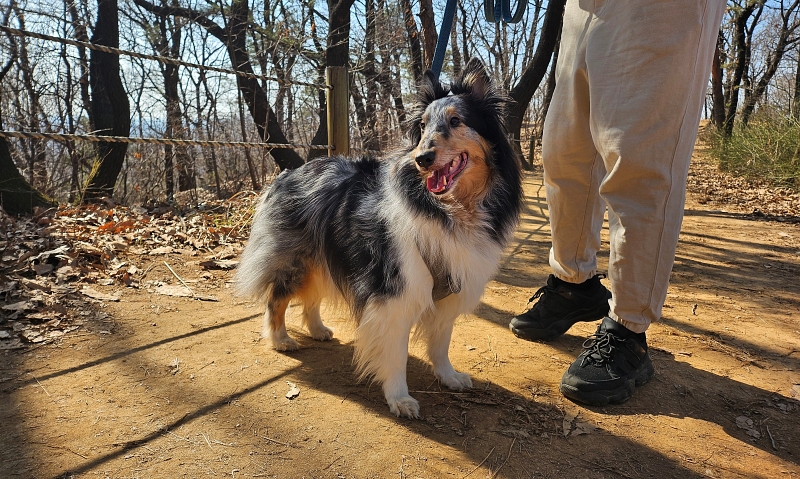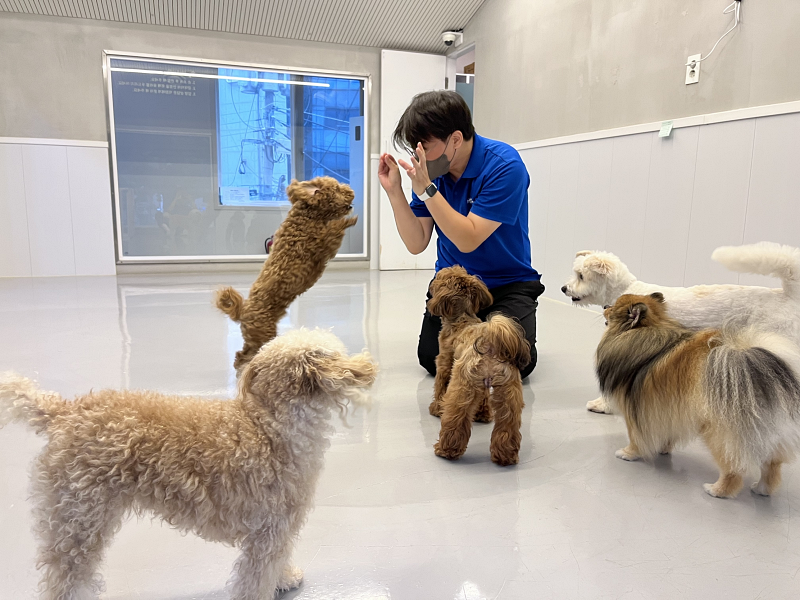-
 Korea.net's 24-hour YouTube channel
Korea.net's 24-hour YouTube channel- NEWS FOCUS
- ABOUT KOREA
- EVENTS
- RESOURCES
- GOVERNMENT
- ABOUT US
![KB Financial Group Research Institute in June last year released a report on animal companions in the country saying 5.52 million households comprising 12.62 million owned pets in late 2022. (iclickart) *[Unauthorized reproduction and redistribution of the above photo is strictly prohibited under copyright laws and regulations.]](/upload/content/editImage/20240325101441817_6WC925CQ.jpg)
KB Financial Group Research Institute in June last year released a report on animal companions in the country saying 5.52 million households comprising 12.62 million pet owners in late 2022. (iclickart) *[Unauthorized reproduction and redistribution of the above photo is strictly prohibited under copyright laws and regulations.]
By Cao Thi Ha
Events on March 23 were held nationwide to mark National Puppy Day. Launched in the country in 2006, the day was designated at the suggestion of American companion animal expert Colleen Paige to respect the lives of such canines and encourage the adoption of abandoned ones.
People are often seen with their dogs in public places such as parks, cafes, restaurants and swimming pools. Such furry creatures can also emerge as stars through their images or videos featured on social media platforms such as YouTube, TikTok and Instagram.
In June last year, KB Financial Group Research Institute released a report on pets in Korea saying 5.52 million households comprising 12.62 people owned pets as of late 2022, accounting for 25.7% of the population. In other words, one in four households raises a pet.
As the number of households with pets rise, the appearance of related industries is also surging. The Korea Rural Economic Institute in August last year said that as of 2022, the domestic pet market was worth KRW 8 trillion.
That same month, the Ministry of Agriculture, Food and Rural Affairs announced an ambitious goal to raise the sector's value to KRW 15 trillion by 2027. The plan is to develop four leading industries within the market such as pet food and set up related infrastructure.
Amid the country's "golden age of pets," the government is seeking to support the sector through tailored support and corporations are releasing a slew of pet-related products.
Local governments are also helping create communities where people and pets peacefully coexist. The following are examples of what such administrations are doing for pets and their owners.

A dog with its owner on March 24 is on Bongjaesan Mountain in Seoul's Gangseo-gu District. (Cao Thi Ha)
First, the Seoul Metropolitan Government has expanded support for veterinary expenses for the underprivileged amid the rise in the number of households with pets. The disadvantaged like those on basic welfare, the lowest income class and single-parent families can receive up to KRW 400,000 in support to get their pets health check-ups, vaccinated or neutered.
The number of veterinary clinics participating in the project Our Neighborhood Veterinary Hospital, which support pets of the underprivileged, rose from 92 in 2022 to 114 last year. And Pet Safety School, a program to provide pet protection education to prospective pet owners, was launched this month.
The Seoul Pet Hanmadang Festival was launched in October last year. The city government also amended a city ordinance on animal protection to designate Oct. 4 Seoul Animal Protection Day, with plans to hold an annual commemorative event.

Since 2019, Seoul's Seocho-gu District has offered a pet-sitting service for pet owners when they go on vacation during Seollal (Lunar New Year), Chuseok (Korean Thanksgiving) or summer vacation. (Seocho-gu Office)
Gyeonggi-do Province runs welfare programs to become a place "where both people and animals are happy."
They seek to stimulate adoption through measures like the addition of pet adoption centers, promotional events like a pet adoption week and campaign, and strategies to prevent abandonment and encourage protection of animals like support for pet registration and counseling centers for animals in crisis.
Other plans include the expansion of pet-friendly spaces such as pet flooring and playgrounds and public funeral sites, as well as policy to promote pet culture such as designation of Gyeonggi-do Pet Day, pet culture festivals and customized pet education programs.
Gimpo, a city in Gyeonggi-do, became the country's first local government to form a pet culture team in the Family Culture Division under the municipal government's Welfare Bureau.
Plus all local governments nationwide have projects to support pet insurance so that residents can adopt abandoned animals without incurring a financial burden.
Gwangju city on March 11 became the first in Honam, a region comprising Gwangju and the provinces of Jeollabuk-do and Jeollanam-do, to launch a pet insurance project for abandoned animals. The program subsidizes up to 60% of veterinary fees with an annual limit of KRW 10 million to a city resident who adopts and registers such an animal.
From next month, Gyeonggi-do will allocate KRW 200 million to provide veterinary insurance to 1,000 abandoned animals for up to a year.
shinn11@korea.kr













